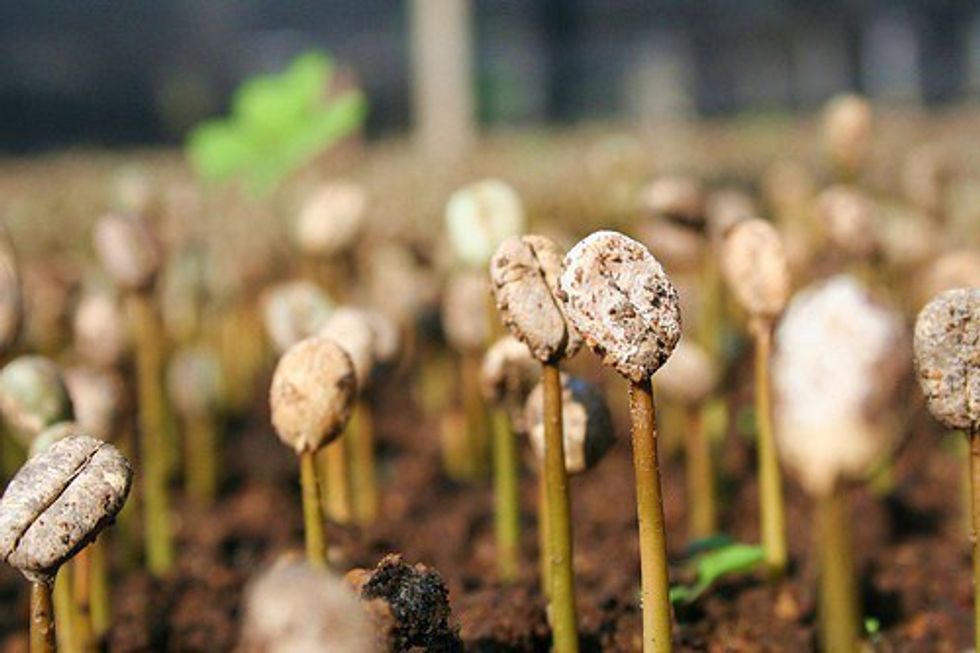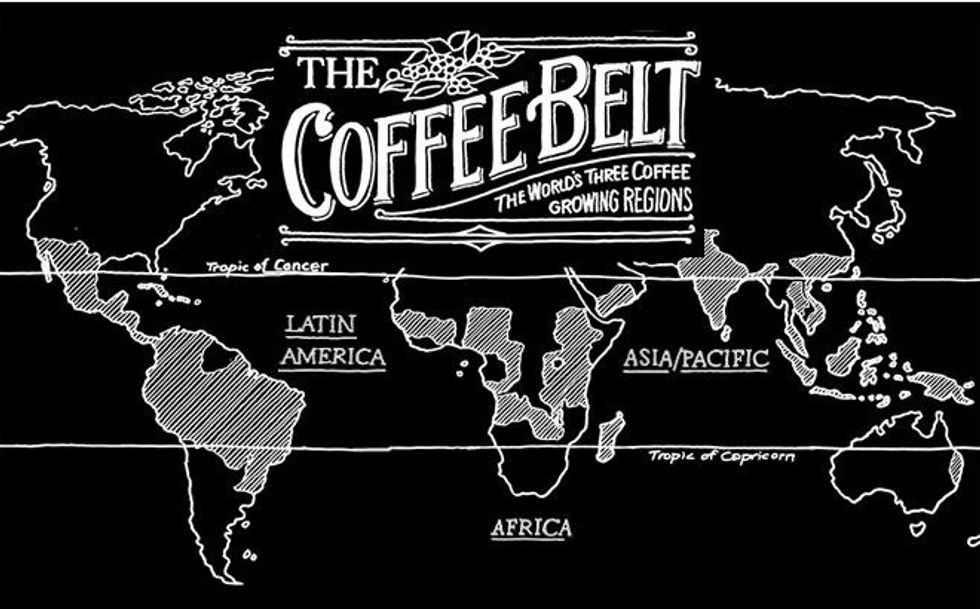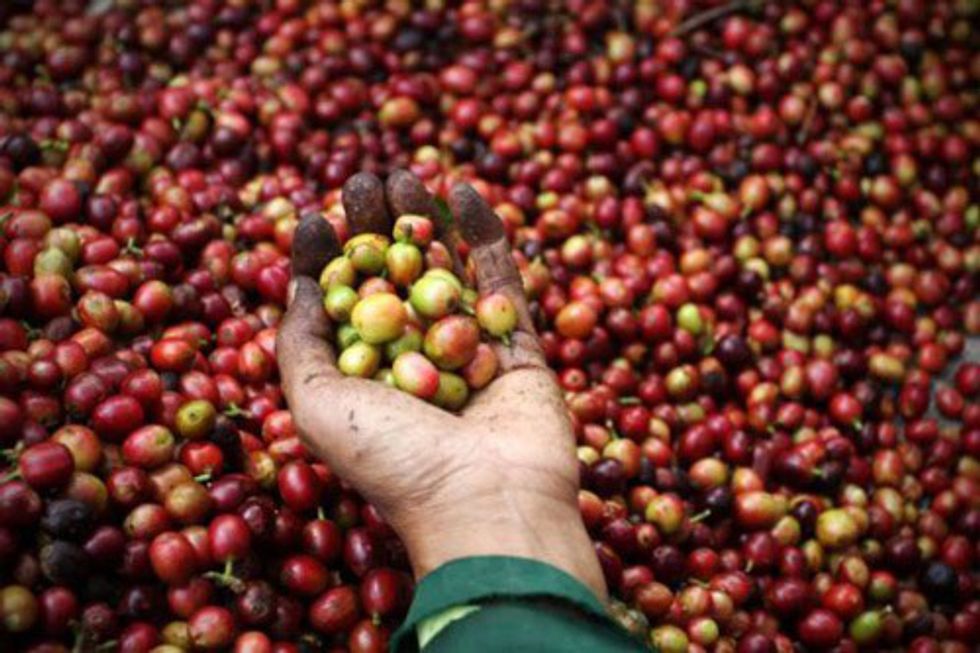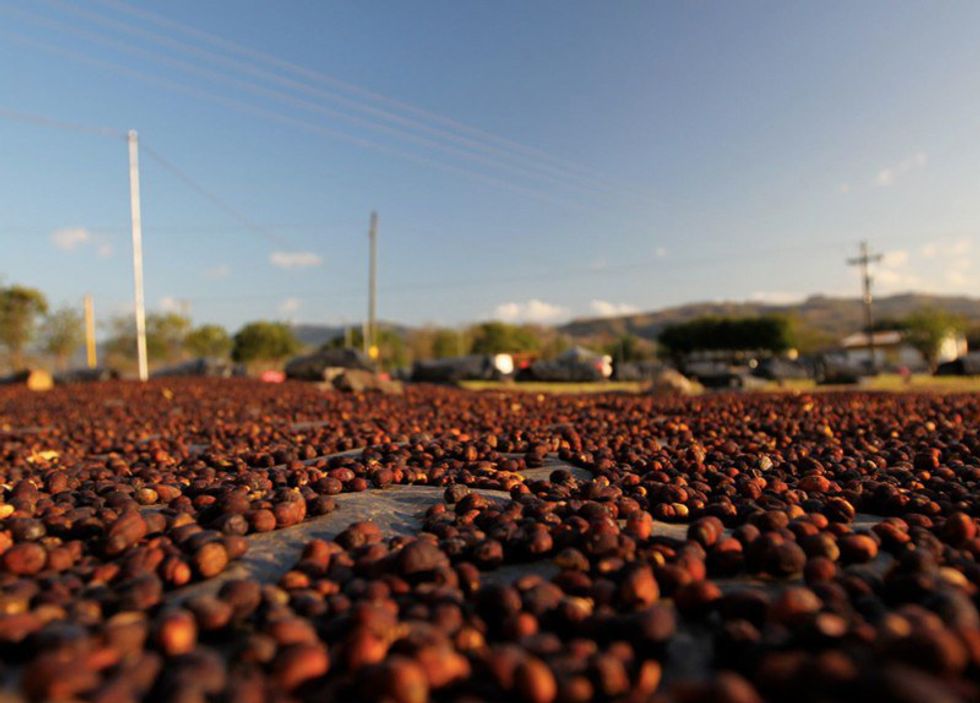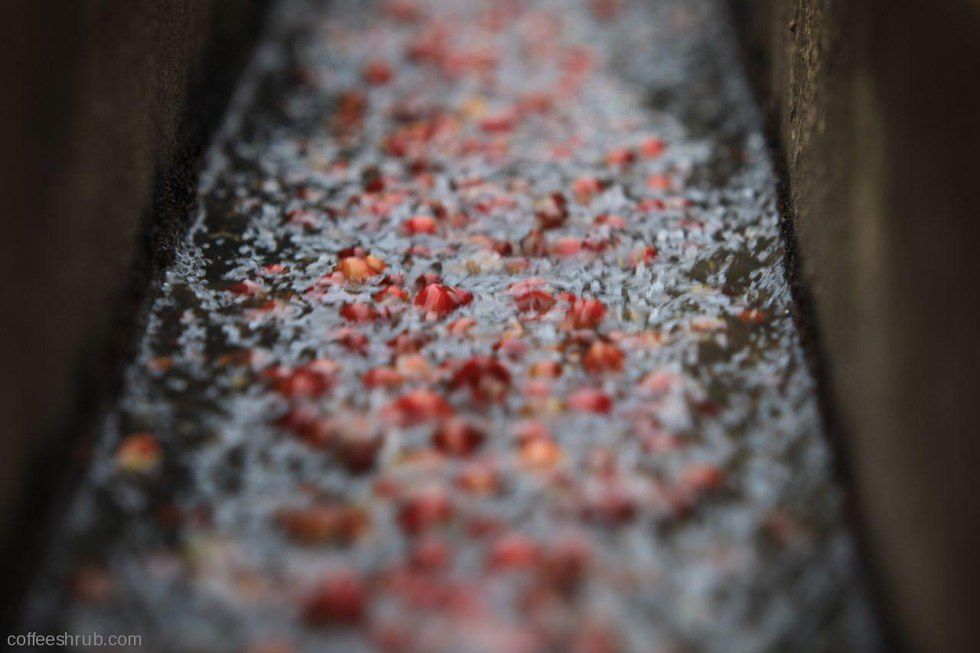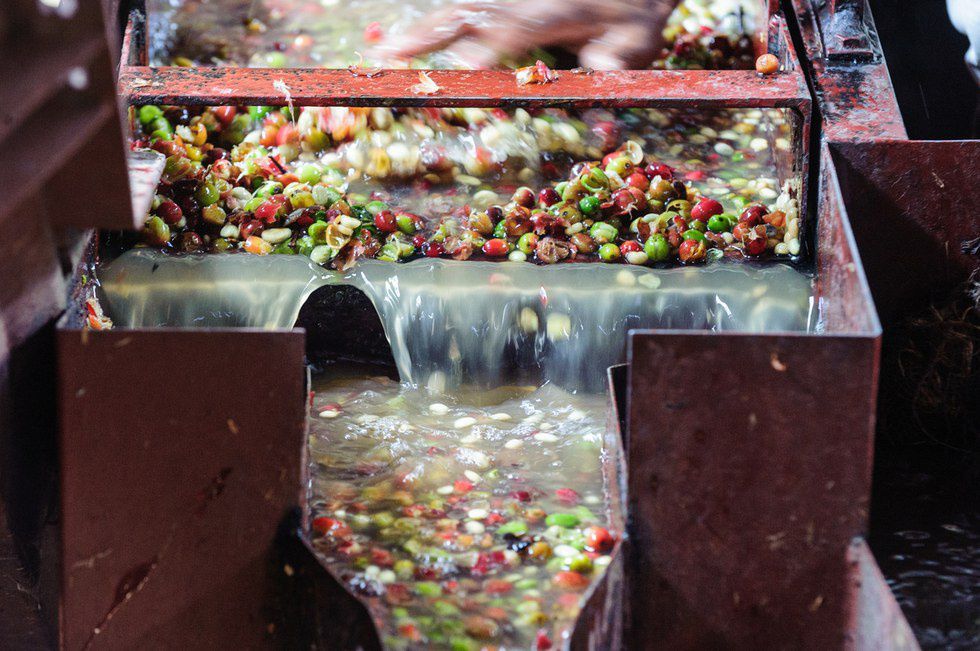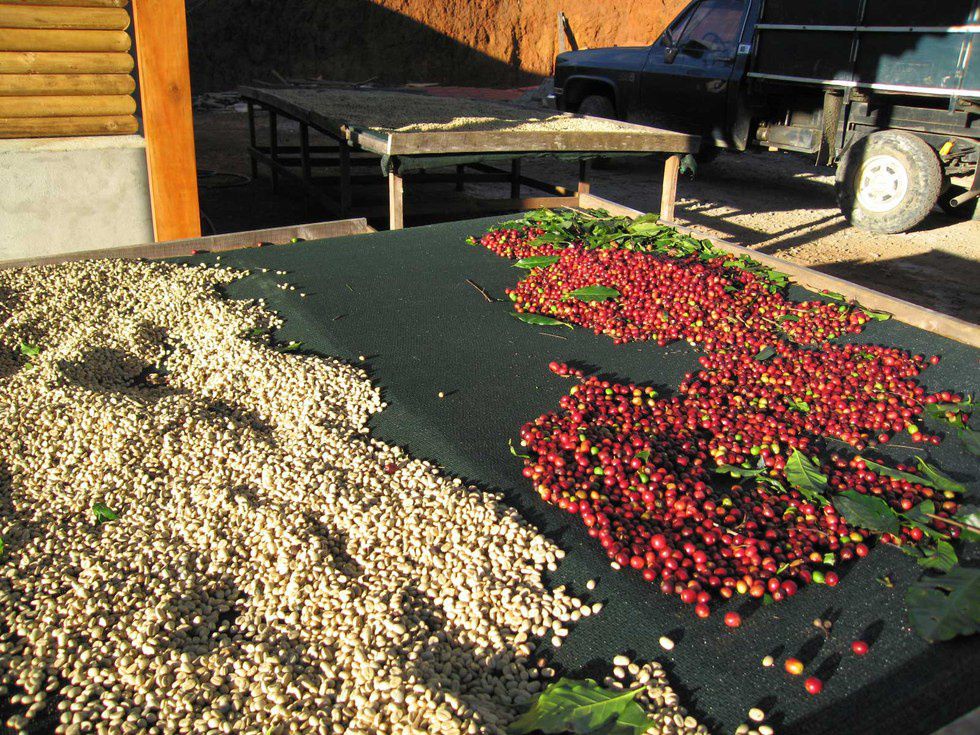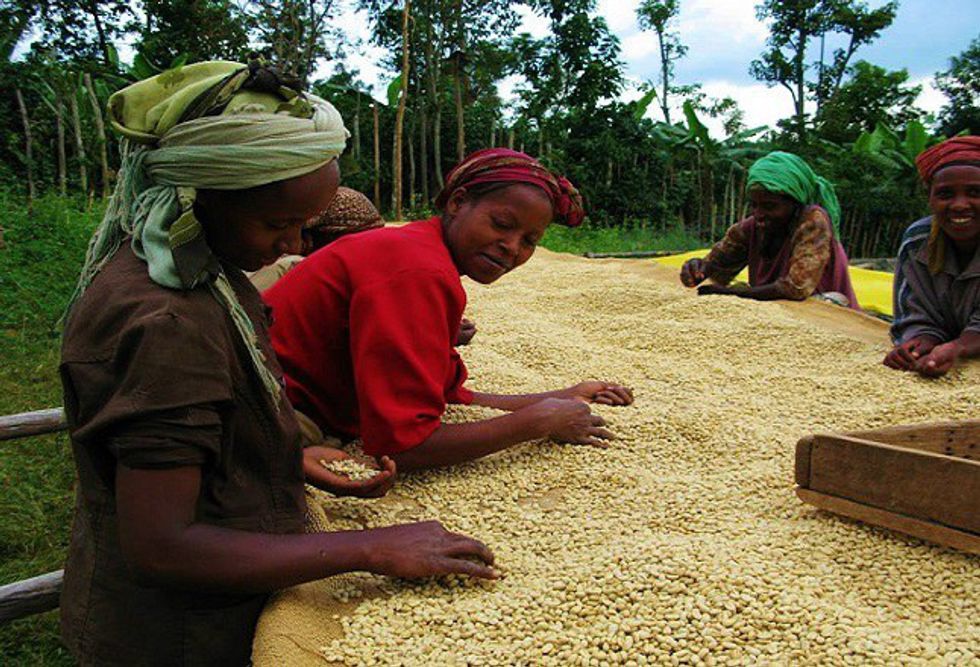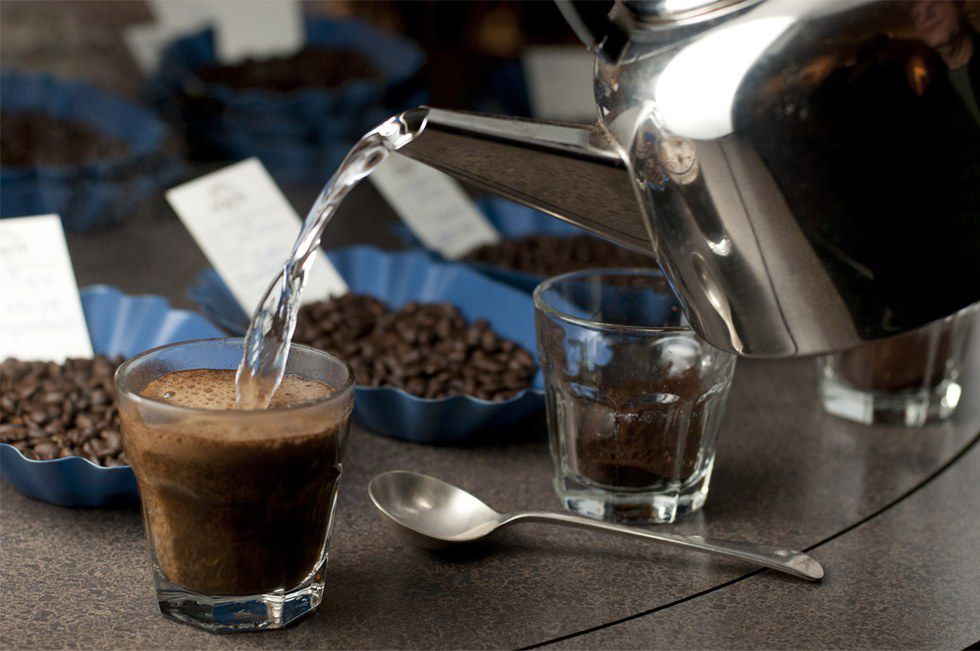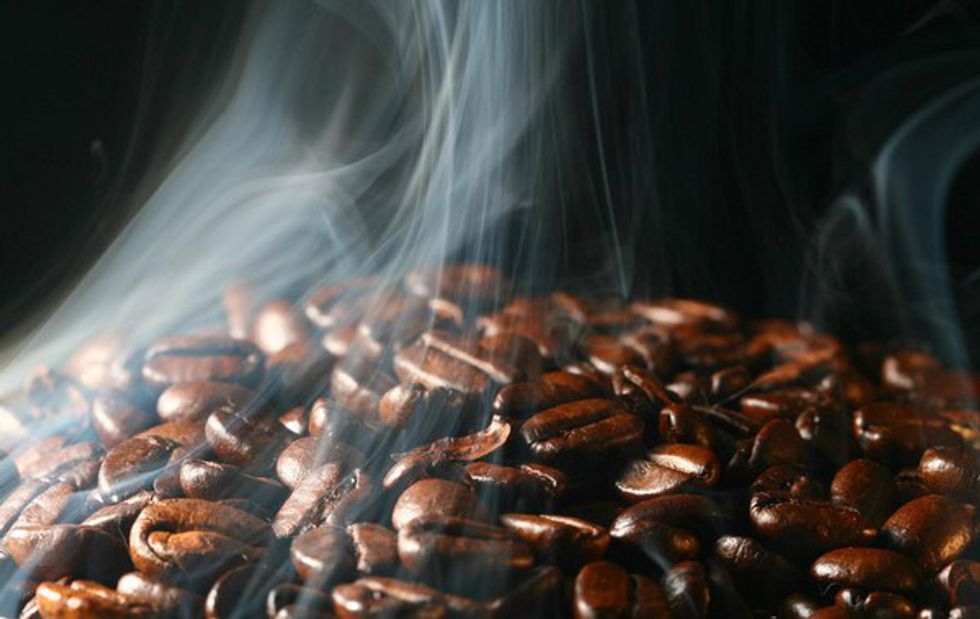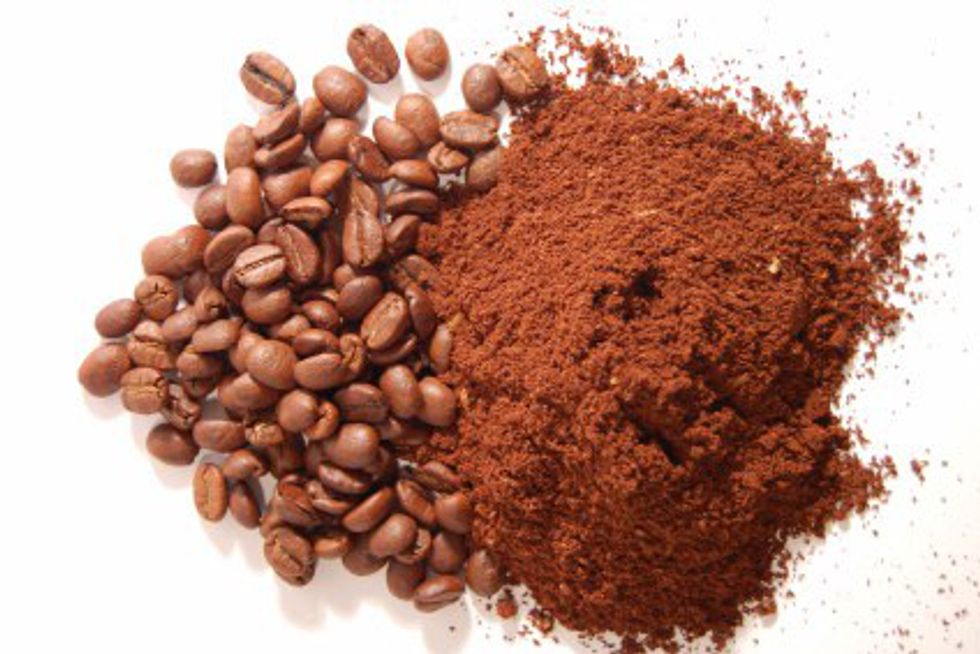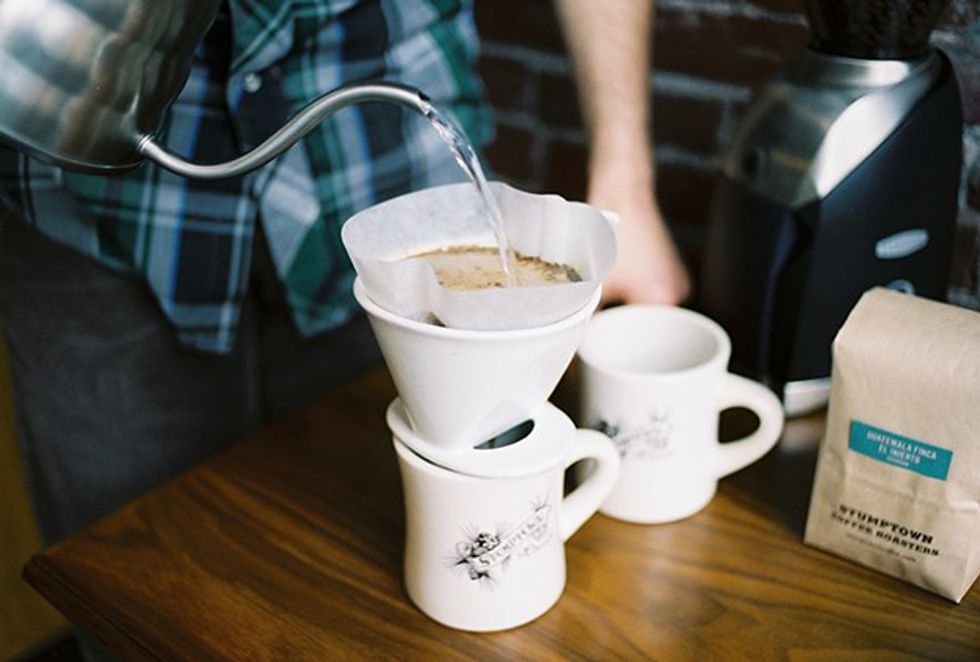Joe. Java. Go Juice. Whatever you're calling it, you're probably drinking it. About 125 million people worldwide depend on coffee for their livelihoods. Coffee is the most valuable and widely traded tropical agricultural product, but hardly anyone appreciates the process of the bean.
Do you actually know where your coffee has been? There's quite a process the coffee bean has to go through before it makes into your morning cup of wake-me-up! Lets go through it, shall we?
Planting the seed
Coffee seeds are generally planted in large beds and grown for up to nine months.
Global coffee production varies from year to year according to weather conditions, diseases, and other factors resulting in a coffee market that is inherently unstable and characterized by wide fluctuations in price.
Scary stuff for anyone who craves the taste of a great cup of coffee in the morning.
Growing conditions
All coffee is grown in between the Tropic of Cancer and the Tropic of Capricorn in a region known as the coffee belt.
In the world of coffee, elevation is a mark of quality. There are two elevations which coffee beans thrive at: high and low.
High-quality Arabica beans thrive at the highest elevations coffee trees can grow, anywhere from 3,000-6,000 feet. At these altitudes, special microclimates nurture the beans with an ideal recipe of temperature, sunlight, and rainfall. The cooler evenings slow down the maturation of coffee cherries, allowing the flavors to develop more fully.
Low elevation typically grows beans known as Robusta beans. These beans grow bigger and faster than Arabica beans, though less dense. These trees are easier to cultivate and more resistant to disease. Almost half the coffee-growing world cultivates Robusta because it's more accessible. The flavor of this coffee bean is typically inferior.
Harvesting
The coffee tree's fruit is known as a cherry.
Over the course of nine months, farmers watch the change in color of the fruits. Once the cherries reach a dark red color they are ready to be harvested!
Cherries can be picked by hand or with machines.
Processing the cherries
Coffee cherries can be processed in one of two ways: dried in the sun or washed in water.
Dry process:
Quite simple, the fruit is laid outside to be dried by the suns heat. During this process, farmers rake the cherries to prevent them from spoiling. The heat does the rest.
Wet process:
On the other hand, when cherries are washed instead they are separated from the pulp using water. The beans are then sorted by ripeness and size. Once ripe, the beans will sink to the bottom and will move into fermentation tanks to remove the mucilage.
Both process' continue until the cherries moisture reaches 11%.
Milling
There are three parts to milling.
1. Hulling
Machines hull the cherries until the husk or the parchment layer of the cherry is removed.
2. Polishing
Polishing removes any silver layer remaining left on the bean.
3. Grading & sorting
After the final sorting has taken place, beans are bagged and weighed, and the bags are sewn shut. Beans are bagged in burlap sacks that will very in weight from 132-154 pounds depending on the country of origin.
Once bagged, the coffee is now ready for its long journey to a roasting plant somewhere in the world. The beans will typically be roasted within a year of processing.
Inspecting
A coffee "Cupper" evaluates the beans by....
Sight, Smell and Taste.
Once chosen for perfection coffee is then roasted!
Roasting
Beans move throughout the entire process of roasting.
Roasting transforms green coffee into aromatic brown beans we all know and love!
Beans are removed from the roasting process once the internal temperature reaches 400 degrees, at which point oil locked inside the bean emerges.
Grinding Coffee
Coarse or fine grids depend on the brewing method.
Extra-coarse: Used for cold-brewing methods.
Coarse: Commonly used for French press coffee.
Medium-coarse: Used for specialty devices such as the Cafe Solo and Chemex Brewers.
Medium: Used for drip pots, much like the ones you probably have at home in your kitchen!
Medium-fine: Used for Pour over Cones, Vacuum Pots and Siphon Brewers.
Fine: Typically used for espresso.
Extra-fine: Used for Turkish coffee.
Brewing
Brewing a perfect cup of coffee is the weakest link in the full enjoyment of coffee. The process of coffee is only the beginning and can go for naught if the brewing is not done correctly. It is very easy to ruin otherwise excellent coffee with improper brewing, so this step is a little bit more detailed. Pay attention!
Brewing time and water levels are crucial. The amount of time that the water is in contact with the coffee grounds is another important flavor factor, as well as how much water is added to the coffee grounds.
There are two basic brewing concepts you need to understand, percolation and maceration. Percolation means water is allowed to flow around the particles and through the aggregate of ground coffee. Maceration means the ground coffee is soaked (or steeped) in the water.
It is of the utmost importance that you understand that the brewing time must be controlled exactly. Improper brewing time is one of the main reasons that people get different results when preparing coffee. If you shorten the extraction time, you'll fail to dissolve the essential flavor compounds that were so carefully developed during the roasting process. Again, over-extraction of will dissolve too many of the undesirable compounds.
*Time and water levels vary with each brewing method*
Enjoy!
Without the hard work and lengthy process the fruit goes through, there would be no morning cup of joe and no mid-afternoon pick me ups. Think about that the next time you pour yourself a cup, think about where your cup came from and all the love that bean has been given before it's reached your mug.




